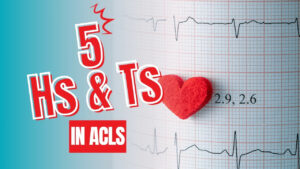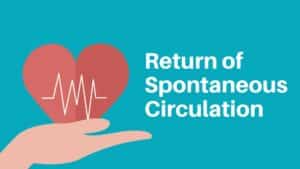
Many hospitals nationwide have embraced a new team-oriented approach to cardiopulmonary resuscitation (CPR) that has delivered outstanding results for sudden cardiac arrest (SCA) victims.
The approach is known as “pit crew CPR” and empowers a team of emergency responders to work together to support SCA victims.
Here’s a closer look at pit crew CPR and its impact on emergency responders and SCA victims.
The True Value of Pit Crew CPR
To better understand the true value of pit crew CPR, let’s consider a recent example of how it’s been used to aid SCA victims.
The Salina Journal reports emergency responders in Salina, Kansas last year implemented pit crew CPR to ensure that more SCA victims arrive at Salina Regional Health Center “with a pulse.”
Much in the same vein as traditional CPR, pit crew CPR requires emergency responders to begin chest compressions as soon as they discover an SCA victim. Conversely, pit crew CPR ensures the delivery of chest compressions is conducted by a team of emergency responders, guaranteeing the SCA victim is fully supported.
As part of pit crew CPR, the first emergency responder to arrive on scene administers compressions to the right of an SCA victim’s chest. Then, after a minute, a second emergency responder delivers compression to the left side of the victim’s chest.
While two emergency responders deliver chest compressions to an SCA victim, a third emergency responder stands at the patient’s head and ensures proper airway management. The third emergency responder also will strap an oxygen mask onto an SCA victim’s nose and mouth and ensure he or she is able to receive oxygen passively during chest compressions.
Together, the three emergency responders are able to boost an SCA victim’s chances of survival – all thanks to a life support “triangle of trust,” according to Salina engineer and emergency medical technician (EMT) Allen Grant.
Grant pointed out Salina EMTs and paramedics received pit crew CPR training in 2014 and began using pit crew CPR on SCA victims last year. Since that time, the results of pit crew CPR have been apparent – the rate of return to spontaneous circulation for SCA victims in Salina jumped from 32 percent in 2014 to 44 percent in 2015 thanks in part to the use of pit crew CPR.
Key Benefits of Pit Crew CPR
How does pit crew CPR differ from traditional CPR? In addition to the use of a team of three emergency responders, pit crew CPR also ensures emergency responders won’t get too tired as they perform chest compressions on an SCA victim.
Usually, emergency responders will perform hands-only CPR on an SCA victim, which requires these responders to push hard and fast in the center of the victim’s chest. The American Heart Association (AHA) notes chest compressions should be performed at a rate of 100 to 120 beats per minute – the same beat of the classic disco song “Stayin’ Alive.”
Hands-only CPR offers an effective option to aid SCA victims, and the AHA states immediate administration of CPR can even double or triple an SCA victim’s chances of survival. At the same time, however, performing hands-only CPR can be exhausting, particularly if one emergency responder is required to administer chest compressions repeatedly on an SCA victim.
Shane Pearson, emergency medical services division chief for the Salina Fire Department, told The Salina Journal that pit crew CPR guarantees there is no interruption in the delivery of chest compressions to an SCA victim, which ultimately increases its overall effectiveness and may make it a more reliable option that traditional CPR alone.
Pearson noted performing chest compressions often requires emergency responders to put their “entire weight” into them. Meanwhile, he stated emergency responders will complete chest compressions over the course of two minutes, monitor and administer an electric shock to an SCA victim’s heart if needed and then continue with compressions.
Furthermore, pit crew CPR’s team-oriented approach ensures an SCA victim receives comprehensive support – something that is crucial to bolster his or her chances of survival.
With a team of emergency responders available, pit crew CPR ensures each responder is better equipped to perform safe, effective chest compressions to the best of his or her ability consistently. As a result, several emergency responders can collaboratively support an SCA victim.
How to Learn Pit Crew CPR
Becoming CPR-certified represents an important first step for those who want to learn pit crew CPR. Regardless of whether you’re a medical professional who wants to bolster his or her skill set or an everyday citizen who wants to learn life-saving skills, you’ll first need to understand the ins and outs of CPR to ensure you can work as part of a pit crew CPR team.
Fortunately, SureFire CPR offers a broad array of CPR classes at campus locations across Southern California, guaranteeing you can learn how to perform CPR successfully.
Unlike many traditional CPR certification programs, we offer CPR classes that blend hands-on and classroom lessons, ensuring you can fully understand how to administer CPR in any situation, at any time. That way, you’ll be able to build your CPR skill set and understand what it takes to deliver CPR in life-threatening scenarios.
Also, our CPR classes are designed for students of all ages and skill levels, making it easy to enroll in a course that fits your needs perfectly. And with our large assortment of CPR classes, you’re sure to find a course that fits your schedule.
Let’s not forget about our expert instructors, either. Our CPR classes are taught by professionally trained medical personnel who boast many years of experience. As such, our instructors can offer real world insights that you might struggle to obtain elsewhere and ensure you can enjoy an unparalleled learning experience.
Learn how to administer CPR so you can support SCA victims in a variety of critical situations – you’ll be glad you did! By enrolling in a CPR course at SureFire CPR, you’ll gain essential skills that could help you save an SCA victim’s life.











